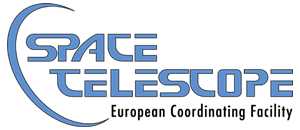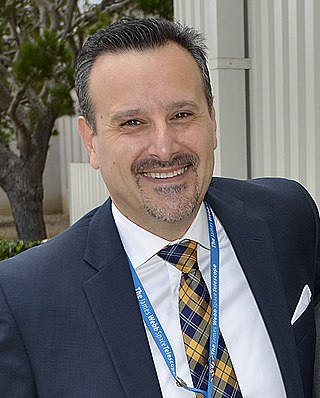
The Hubble Space Telescope is a space telescope that was launched into low Earth orbit in 1990 and remains in operation. It was not the first space telescope, but it is one of the largest and most versatile, renowned as a vital research tool and as a public relations boon for astronomy. The Hubble telescope is named after astronomer Edwin Hubble and is one of NASA's Great Observatories. The Space Telescope Science Institute (STScI) selects Hubble's targets and processes the resulting data, while the Goddard Space Flight Center (GSFC) controls the spacecraft.

The Space Telescope Science Institute (STScI) is the science operations center for the Hubble Space Telescope (HST), science operations and mission operations center for the James Webb Space Telescope (JWST), and science operations center for the Nancy Grace Roman Space Telescope. STScI was established in 1981 as a community-based science center that is operated for NASA by the Association of Universities for Research in Astronomy (AURA). STScI's offices are located on the Johns Hopkins University Homewood Campus and in the Rotunda building in Baltimore, Maryland.

In astronomy, photometry, from Greek photo- ("light") and -metry ("measure"), is a technique used in astronomy that is concerned with measuring the flux or intensity of light radiated by astronomical objects. This light is measured through a telescope using a photometer, often made using electronic devices such as a CCD photometer or a photoelectric photometer that converts light into an electric current by the photoelectric effect. When calibrated against standard stars of known intensity and colour, photometers can measure the brightness or apparent magnitude of celestial objects.

IRAF is a collection of software written at the National Optical Astronomy Observatory (NOAO) geared towards the reduction of astronomical images and spectra in pixel array form. This is primarily data taken from imaging array detectors such as CCDs. It is available for all major operating systems for mainframes and desktop computers. IRAF was designed cross-platform, supporting VMS and UNIX-like operating systems. Use on Microsoft Windows was made possible by Cygwin in earlier versions, and can be today done with the Windows Subsystem for Linux. Today, it is primarily used on macOS and Linux.

The Advanced Camera for Surveys (ACS) is a third-generation axial instrument aboard the Hubble Space Telescope (HST). The initial design and scientific capabilities of ACS were defined by a team based at Johns Hopkins University. ACS was assembled and tested extensively at Ball Aerospace & Technologies Corp. and the Goddard Space Flight Center and underwent a final flight-ready verification at the Kennedy Space Center before integration in the cargo bay of the Columbia orbiter. It was launched on March 1, 2002, as part of Servicing Mission 3B (STS-109) and installed in HST on March 7, replacing the Faint Object Camera (FOC), the last original instrument. ACS cost US$86 million at that time.

The Wide Field and Planetary Camera 2 (WFPC2) is a camera formerly installed on the Hubble Space Telescope. The camera was built by the Jet Propulsion Laboratory and is roughly the size of a baby grand piano. It was installed by servicing mission 1 (STS-61) in 1993, replacing the telescope's original Wide Field and Planetary Camera (WF/PC). WFPC2 was used to image the Hubble Deep Field in 1995, the Engraved Hourglass Nebula and Egg Nebula in 1996, and the Hubble Deep Field South in 1998. During STS-125, WFPC2 was removed and replaced with the Wide Field Camera 3 as part of the mission's first spacewalk on May 14, 2009. After returning to Earth, the camera was displayed briefly at the National Air and Space Museum and the Jet Propulsion Laboratory before returning to its final home at the Smithsonian's National Air and Space Museum.
The Guide Star Catalog (GSC), also known as the Hubble Space Telescope, Guide Catalog (HSTGC), is a star catalog compiled to support the Hubble Space Telescope with targeting off-axis stars. GSC-I contained approximately 20,000,000 stars with apparent magnitudes of 6 to 15. GSC-II contains 945,592,683 stars out to magnitude 21. As far as possible, binary stars and non-stellar objects have been excluded or flagged as not meeting the requirements of Fine Guidance Sensors. This is the first full sky star catalog created specifically for navigation in outer space.
The Digitized Sky Survey (DSS) is a digitized version of several photographic astronomical surveys of the night sky, produced by the Space Telescope Science Institute between 1983 and 2006.

The Space Telescope – European Coordinating Facility (ST-ECF) was an institution which provided a number of support and service functions primarily for European observers of the NASA/ESA Hubble Space Telescope (HST). It was established in 1984 by the European Space Agency (ESA) and the European Southern Observatory (ESO), and was located at the ESO headquarters in Garching bei München, Germany. The ST-ECF ceased operations on 31 December 2010.

Xi1 Centauri, Latinized from ξ1 Centauri, is a solitary star in the southern constellation of Centaurus. It is visible to the naked eye with an apparent visual magnitude of +4.83. With an annual parallax shift of 14.79 mas, it is located around 221 light years from the Sun. At that distance, the apparent visual magnitude of the star is diminished by an interstellar extinction factor of 0.10 due to intervening dust. Just 17 arc minutes to the east of Xi1 Centauri lies the galaxy NGC 4945.
The Space Telescope Science Data Analysis System (STSDAS) is an IRAF-based suite of astronomical software for reducing and analyzing astronomical data. It contains general purpose tools and packages for processing data from the Hubble Space Telescope. STSDAS is produced by Space Telescope Science Institute (STScI). The STSDAS software is generally in the public domain, however some routines were taken from the Numerical Recipes and other books and cannot freely distributed.
An association (astronomy) is a combined or co-added group of astronomical exposures from which cosmic rays have been removed. WFPC2 associations constitute one type of association and are tools in the Hubble Space Telescope (HST) archive for using data from the Wide Field and Planetary Camera 2 (WFPC2). Associations were introduced in the HST archive at the beginning of 1998. Since then, astronomers have been able to retrieve on-the-fly re-calibrated co-added WFPC2 images that have already been cleaned of cosmic rays from the Space Telescope European Coordinating Facility (ST-ECF), the Canadian Astronomy Data Centre (CADC) and Space Telescope Science Institute (STScI) archives.
Drizzle is a digital image processing method for the linear reconstruction of undersampled images. The method is normally used for the combination of astronomical images and was originally developed for the Hubble Deep Field observations made by the Hubble Space Telescope. The algorithm, known as variable-pixel linear reconstruction, or informally as "Drizzle", preserves photometry and resolution, can weight input images according to the statistical significance of each pixel, and removes the effects of geometric distortion on both image shape and photometry. In addition, it is possible to use drizzling to combine dithered images in the presence of cosmic rays.

The Cosmic Origins Spectrograph (COS) is a science instrument that was installed on the Hubble Space Telescope during Servicing Mission 4 (STS-125) in May 2009. It is designed for ultraviolet (90–320 nm) spectroscopy of faint point sources with a resolving power of ≈1,550–24,000. Science goals include the study of the origins of large scale structure in the universe, the formation and evolution of galaxies, and the origin of stellar and planetary systems and the cold interstellar medium. COS was developed and built by the Center for Astrophysics and Space Astronomy (CASA-ARL) at the University of Colorado at Boulder and the Ball Aerospace and Technologies Corporation in Boulder, Colorado.
Sky-Map.org is a wiki and interactive sky map that covers over half a billion known celestial bodies. WikiSky is designed, in part, as a wiki. As such users can edit information about different stars by writing articles, adding Internet links, uploading images, or creating a special interest group for a specific task.

Alberto Conti, is an astrophysicist and the Vice President and General Manager of the Civil Space Strategic Business Unit (SBU) at Ball Aerospace. He is one of the creators of the GoogleSky concept, of the idea of astronomical outreach at South by SouthWest 2013 and of the James Webb Space Telescope iBook. He is also the Executive Producer of the Emmy Winning CNN Films The Hunt for Planet B.

Rodger Evans Doxsey was an American physicist and astronomer who made major contributions to the scientific and operational success of NASA's Hubble Space Telescope (HST). He joined the HST Project at the Space Telescope Science Institute (STScI), in Baltimore, Maryland, in 1981, and was head of the Hubble Missions Office when he died in 2009.

Astropy is a collection of software packages written in the Python programming language and designed for use in astronomy. The software is a single, free, core package for astronomical utilities due to the increasingly widespread usage of Python by astronomers, and to foster interoperability between various extant Python astronomy packages. Astropy is included in several large Python distributions; it is part of package managers for Linux and macOS, the Anaconda Python Distribution, Enthought Canopy and Ureka.
The Mikulski Archive for Space Telescopes (MAST) is an astronomical data archive. The archive brings together data from the visible, ultraviolet, and near-infrared wavelength regimes. The NASA funded project is located at the Space Telescope Science Institute (STScI) in Baltimore, Maryland and is one of the largest astronomical databases in the world.

Luigi Rolly Bedin, is an Italian astrophysicist and researcher at the National Institute of Astrophysics of the Padua Astronomical Observatory. His research focuses on stellar populations in open and globular clusters, exoplanets and nearby brown dwarfs. He is the discoverer with his team of the dwarf spheroidal galaxy Bedin I. He is a member of the International Astronomical Union.












